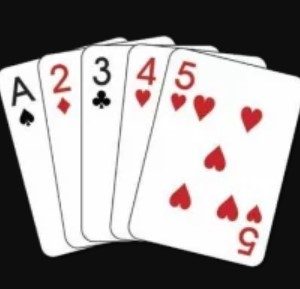Importance of Improving on Fourth Street in Stud 8

Stud 8 or Better is one of the few poker games where a tighter strategy can still result in consistent wins. Many people try and approach the game like NL Hold’em, and it ends up resulting in disaster once they run into smarter Stud Hi-Lo players.
One of the biggest mistakes we see from players is continuing past Fourth Street without a reasonable hand or draw. Today, we will explain the importance of improving on Fourth Street in Stud 8.
Improve or Fold
A key concept that I was taught about the game years ago was that when playing Stud 8 or Better, you need to improve your hand on Fourth Street in order to continue in most hands. This is different from standard Seven Card Stud where most players will continue until Fifth Street.
Stud 8 is a split pot game and the object of the pot is to scoop pots. Often, a player is going to be playing for half of the pot. The only time where this is going to be profitable is when there are three people in the pot past Third Street. If you continue chasing half of the pot past fourth without a hand, you will only win half of the antes. The risk vs. reward just isn’t there.
Why Improving is Important
Improving on Fourth Street drastically improves your odds of scooping a pot. For example, if you start with a three-card 7 and then catch the fourth card, you only need to catch one in three remaining cards to make a hand. If your 7 improves to a potential 7 straight draw, then you have a one in three chance of scooping the entire pot.
When you don’t improve on fourth, you now have to catch 66.7% of your remaining cards to make your hand. You almost never will have the proper odds to chase in this situation. Of course, improvement varies based on the hand you start with.
What Classifies as Improvement
Improving on Fourth Street varies based on the hand you start with. If you start with three to a low, then you need to catch your fourth low card. If you start with a low pair with a baby card, you have to catch either a second pair or a low card. However, with a low pair and baby, you’re looking to back into two pair or better to have a reasonable chance to at least chop.

Playing a flush draw, you want to improve to a four-flush, four-low, or a pair. If you have a three-flush with a high card, improving to a high pair is a reasonable improvement.
Exception to Improvement
There are times where you will forego the improve or dump model and this depends on various factors. The first is when you start out with a high pair. Unless you have a reason to believe you’re up against better hands or scoop-capable hands, you can continue with your high pair. However, you will be doing so cautiously as you’re chasing only half the pot in most cases.
Next, there are times where you don’t improve on Fourth Street and your opponents fail to improve as well. Let’s assume you start with 6-4-2 and a 7 and a 3 come into the pot on Third Street. On fourth, all three of you catch a face card. Unless someone started with a buried pair, it is unlikely any of you improved. In this case, you can continue past Fourth Street.
The most obvious time you will continue past fourth without improvement is when you’re rolled up. In this case, you’re going to likely play most hands to showdown. Of course, if it is obvious at any point that your trips are beaten, you can still reasonably fold. However, you will not be doing this on Fourth Street.
